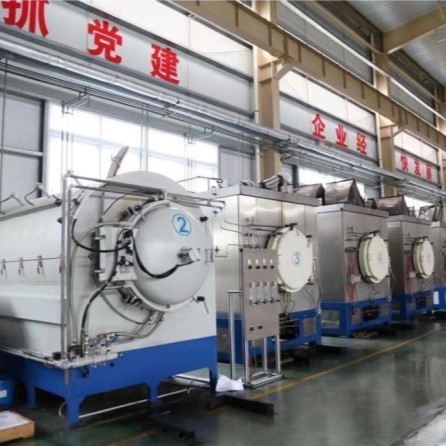
Vacuum Furnace
Vacuum Heat Treat Sintering and Brazing Furnace
Item Number : KT-BF
Price varies based on specs and customizations
- Rated temperature
- 700 ℃
- Working area size
- Φ820×1700㎜
- Cold ultimate vacuum
- 6.67×10-3Pa
Shipping:
Contact us to get shipping details Enjoy On-time Dispatch Guarantee.
Why Choose Us
Reliable PartnerEasy ordering process, quality products, and dedicated support for your business success.
KINTEK Vacuum Brazing Furnaces: Precision, Quality, and Customization
At KINTEK, we leverage exceptional R&D and in-house manufacturing to deliver advanced high-temperature furnace solutions. Our Vacuum Brazing Furnaces are engineered for applications demanding strong, clean, and reliable metal joints, creating a pristine vacuum environment to eliminate oxidation and ensure superior brazing outcomes.
Visual Overview & Key Specifications
Explore the design and core capabilities of our Vacuum Brazing Furnace:
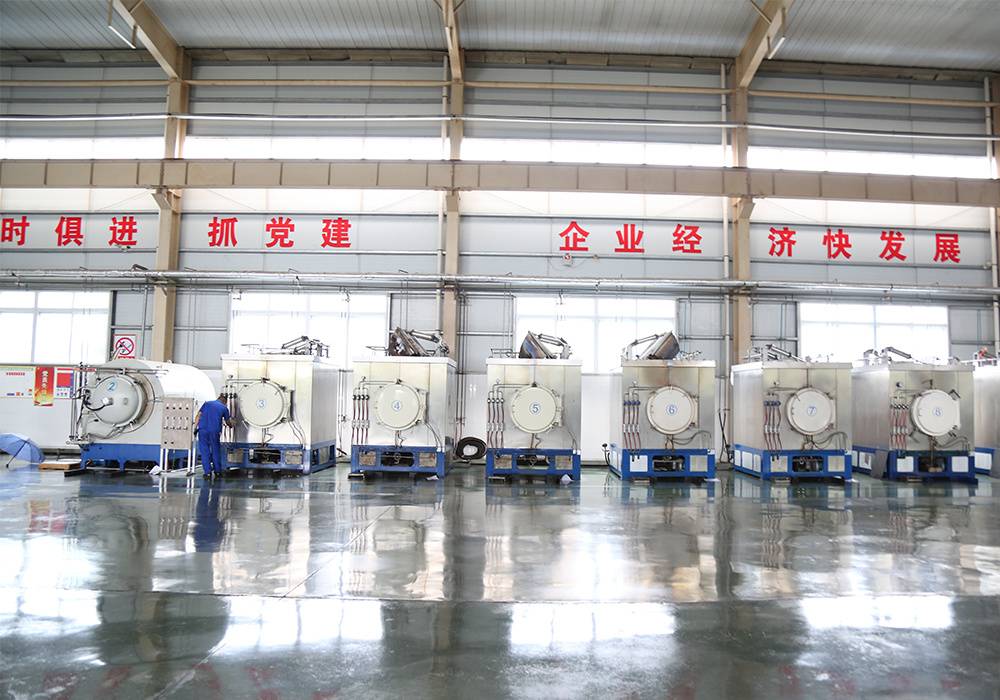
Technical Specifications at a Glance:
| Rated power | 100 Kw |
| Rated temperature | 700 ℃ |
| Power supply | 380 V, 50 Hz |
| Working area size | Φ820×1700㎜ |
| Cold ultimate vacuum | 6.67×10-3Pa |
| Pressure rise rate | 2pa/h |
| Temperature control accuracy | ±1℃ |
Need different specifications? Our strong deep customization capability allows us to tailor solutions to your unique experimental requirements. Discuss your project with us!
Why Choose KINTEK's Vacuum Brazing Furnace?
Our furnaces empower your laboratory with significant advantages:
- Superior Joint Quality: Achieve high-quality joints with minimal voids and excellent mechanical properties. The vacuum environment eliminates the need for flux, preventing contamination and post-brazing cleaning, while reducing oxidation and scaling.
- Precision & Efficiency: Benefit from exceptional temperature uniformity for consistent results, an efficient heating system for reduced cycle times, and an advanced vacuum system for a controlled brazing environment.
- Versatile Material Compatibility: Capable of achieving very high temperatures, allowing for the brazing of a wide variety of metals, including stainless steel, titanium, and aluminum, and suitable for joining complex components.
- User-Friendly & Robust: Features an intuitive interface for simplified operation and monitoring, and is constructed from durable materials for longevity in demanding environments.
- Environmentally Conscious: An environmentally friendly process with minimal waste generation.
Diverse Industrial Applications
KINTEK Vacuum Brazing Furnaces are trusted across various industries for creating strong and leak-proof joints in critical components:
- Heating and cooling assemblies
- Micro-channel heat exchangers
- Aircraft components
- Sensors
- Medical devices
- Structural components
- Other thermal products requiring high-integrity joints
Operating Principle
Our vacuum brazing furnace is a horizontal unit comprising a furnace shell, lining, heating elements, furnace tank, material tray, vacuum system, and an electronic control system. The furnace shell is robustly welded from carbon steel and section steel. It's lined with high-quality insulation and refractory bricks, configured in three zones for optimal thermal management. Iron-chromium-aluminum wire heating elements are spirally arranged on wire bricks along the sides and bottom. The advanced vacuum system utilizes a three-stage pump configuration (oil diffusion, Roots, and mechanical pumps) with pneumatic baffle and manual butterfly valves to achieve and maintain the necessary vacuum levels.
Partner with KINTEK for Your Brazing Needs
Ready to enhance your brazing capabilities with a furnace solution tailored to your precise needs? Leverage KINTEK's expertise in high-temperature technology and deep customization.
Contact our specialists today to discuss your application, request a detailed quote, or learn more about our custom vacuum brazing furnace solutions.
FAQ
What Are The Main Applications Of A Vacuum Furnace?
What Is An Atmosphere Furnace Used For?
What Is A Dental Furnace Used For?
What Is A Vacuum Induction Furnace?
What Are The Main Applications Of A Horizontal Vacuum Furnace?
What Are The Key Features Of A Vacuum Furnace?
What Are The Key Features Of An Atmosphere Furnace?
What Are The Key Features Of A Dental Furnace?
What Are The Main Applications Of Vacuum Induction Furnaces?
What Are The Key Features Of A Horizontal Vacuum Furnace?
How Does A Vacuum Furnace Work?
How Does An Atmosphere Furnace Work?
How Does A Dental Furnace Work?
How Does A Vacuum Induction Furnace Work?
How Does A Horizontal Vacuum Furnace Work?
What Are The Advantages Of Using A Vacuum Furnace?
What Are The Advantages Of Using An Atmosphere Furnace?
What Are The Advantages Of Using A Dental Furnace?
What Are The Advantages Of Using A Vacuum Induction Furnace?
What Are The Advantages Of Using A Horizontal Vacuum Furnace?
What Types Of Materials Can Be Processed In A Vacuum Furnace?
What Types Of Gases Can Be Used In An Atmosphere Furnace?
What Safety Features Should A Dental Furnace Have?
What Types Of Vacuum Induction Furnaces Are Available?
What Types Of Materials Can Be Processed In A Horizontal Vacuum Furnace?
What Is The Difference Between Hot Wall And Cold Wall Vacuum Furnaces?
What Safety Features Are Available In Advanced Atmosphere Furnaces?
What Types Of Dental Furnaces Are Available?
Why Is Temperature Control Important In Vacuum Induction Furnaces?
What Is The Temperature Range Of A Horizontal Vacuum Furnace?
Can Vacuum Furnaces Be Customized For Specific Applications?
What Materials Can Be Processed In A Vacuum Induction Furnace?
How Does The Vacuum Environment Benefit Material Processing?
4.8
out of
5
Incredible precision and durability! This furnace has revolutionized our production line.
4.7
out of
5
Fast delivery and top-notch quality. Worth every penny for the advanced technology.
4.9
out of
5
The furnace's performance is unmatched. It’s a game-changer for our lab.
4.8
out of
5
Superior build and efficiency. Highly recommend for industrial applications.
4.9
out of
5
Exceptional value for money. The furnace exceeded all our expectations.
4.7
out of
5
Reliable and high-performance. Perfect for precision sintering and brazing.
4.8
out of
5
Cutting-edge technology with flawless operation. A must-have for serious professionals.
4.9
out of
5
Outstanding durability and consistent results. Our team is thoroughly impressed.
4.8
out of
5
Quick setup and easy to use. The furnace delivers perfect results every time.
REQUEST A QUOTE
Our professional team will reply to you within one business day. Please feel free to contact us!
Related Products

600T Vacuum Induction Hot Press Vacuum Heat Treat and Sintering Furnace
600T Vacuum Induction Hot Press Furnace for precise sintering. Advanced 600T pressure, 2200°C heating, vacuum/atmosphere control. Ideal for research & production.
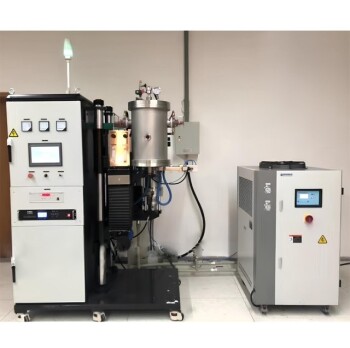
Vacuum Heat Treat Sintering Furnace Molybdenum Wire Vacuum Sintering Furnace
KINTEK's Vacuum Molybdenum Wire Sintering Furnace excels in high-temperature, high-vacuum processes for sintering, annealing, and material research. Achieve precise 1700°C heating with uniform results. Custom solutions available.

Small Vacuum Heat Treat and Tungsten Wire Sintering Furnace
Compact vacuum tungsten wire sintering furnace for labs. Precise, mobile design with superior vacuum integrity. Ideal for advanced material research. Contact us!

9MPa Air Pressure Vacuum Heat Treat and Sintering Furnace
Achieve superior ceramic densification with KINTEK's advanced air pressure sintering furnace. High-pressure up to 9MPa, precise 2200℃ control.

Vacuum Heat Treat Furnace with Ceramic Fiber Liner
KINTEK's Vacuum Furnace with Ceramic Fiber Lining offers precise high-temperature processing up to 1700°C, ensuring uniform heat distribution and energy efficiency. Ideal for labs and production.

Molybdenum Vacuum Heat Treat Furnace
High-performance molybdenum vacuum furnace for precise 1400°C heat treatment. Ideal for sintering, brazing, and crystal growth. Durable, efficient, and customizable.

Vacuum Heat Treat Sintering Furnace with Pressure for Vacuum Sintering
KINTEK's Vacuum Pressure Sintering Furnace offers 2100℃ precision for ceramics, metals, and composites. Customizable, high-performance, and contamination-free. Get a quote now!

Dental Porcelain Zirconia Sintering Ceramic Vacuum Press Furnace
Precision Vacuum Press Furnace for labs: ±1°C accuracy, 1200°C max, customizable solutions. Boost research efficiency today!

Vacuum Hot Press Furnace Machine Heated Vacuum Press Tube Furnace
Discover KINTEK's advanced Vacuum Tube Hot Press Furnace for precise high-temperature sintering, hot pressing, and material bonding. Customizable solutions for labs.

Spark Plasma Sintering SPS Furnace
Discover KINTEK's advanced Spark Plasma Sintering (SPS) Furnace for rapid, precise material processing. Customizable solutions for research and production.

High Pressure Laboratory Vacuum Tube Furnace Quartz Tubular Furnace
KINTEK High Pressure Tube Furnace: Precision heating up to 1100°C with 15Mpa pressure control. Ideal for sintering, crystal growth, and lab research. Customizable solutions available.
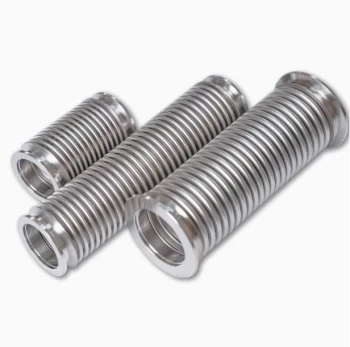
High Performance Vacuum Bellows for Efficient Connection and Stable Vacuum in Systems
KF ultra-high vacuum observation window with high borosilicate glass for clear viewing in demanding 10^-9 Torr environments. Durable 304 stainless steel flange.
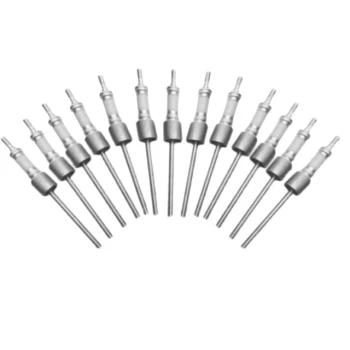
Ultra Vacuum Electrode Feedthrough Connector Flange Power Lead for High Precision Applications
Ultra-Vacuum Electrode Feedthroughs for reliable UHV connections. High-sealing, customizable flange options, ideal for semiconductor & space applications.
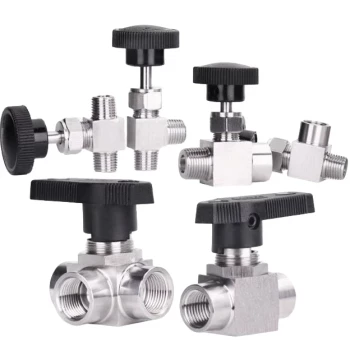
304 316 Stainless Steel High Vacuum Ball Stop Valve for Vacuum Systems
KINTEK's 304/316 stainless steel vacuum ball valves and stop valves ensure high-performance sealing for industrial and scientific applications. Explore durable, corrosion-resistant solutions.

CF KF Flange Vacuum Electrode Feedthrough Lead Sealing Assembly for Vacuum Systems
Reliable CF/KF flange vacuum electrode feedthrough for high-performance vacuum systems. Ensures superior sealing, conductivity & durability. Customizable options available.

Vacuum Hot Press Furnace Machine Heated Vacuum Press
KINTEK Vacuum Hot Pressing Furnace: Precision heating & pressing for superior material density. Customizable up to 2800°C, ideal for metals, ceramics, and composites. Explore advanced features now!
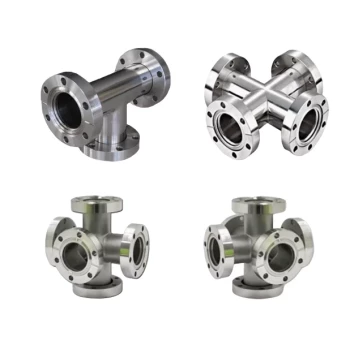
Ultra High Vacuum Stainless Steel KF ISO CF Flange Pipe Straight Pipe Tee Cross Fitting
KF/ISO/CF ultra-high vacuum stainless steel flange pipe systems for precision applications. Customizable, durable, and leak-tight. Get expert solutions now!

RF PECVD System Radio Frequency Plasma Enhanced Chemical Vapor Deposition
KINTEK RF PECVD System: Precision thin-film deposition for semiconductors, optics & MEMS. Automated, low-temperature process with superior film quality. Custom solutions available.

Split Chamber CVD Tube Furnace with Vacuum Station CVD Machine
Split Chamber CVD Tube Furnace with Vacuum Station - High precision 1200°C lab furnace for advanced materials research. Customizable solutions available.
